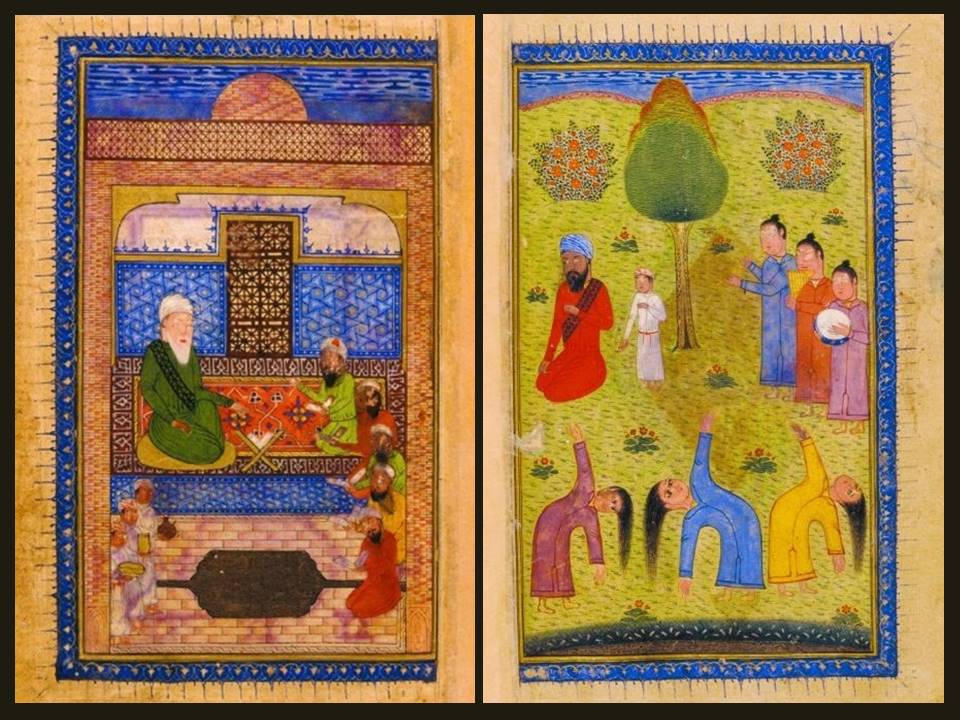As part of the project Depicted legitimacy: Sufi-Sultan encounters in the visual and textual cultures of South Asia, this lecture focuses on the case of the frontispiece of a fifteenth-century illustrated manuscript of the Shāhnāmeh (The Book of Kings), the epic poem written in Persian by the poet Ferdowsi (10th-11th century), now kept at the British Library (Or. 1403). Although not universally accepted, the manuscript has been connected to India in previous scholarship based on stylistic and scientific analyses, and more specifically to the Bahmanids (1347-1528) of the Deccan.
Depicted Legitimacy among Text, Image, and Architecture: The British Library Shāhnāmeh manuscript (Or. 1403) reinterpreted in light of Sufi-sultan relations in 15th-century Deccan
Peyvand Firouzeh (Art Histories Fellow 2015/16)
Forum Transregionale Studien, Wallotstr. 14, 14193 Berlin

The frontispiece in question depicts a Sufi scene including a Sufi master and his disciples as well as dancers. By examining this double-page illustration in relation to the manuscript as a whole, and ‘reading’ it along with a hagiographical text and the epigraphical program at the tomb of Aḥmad Shāh Bahmanid (r.1422-1436), both patronized at the Bahmanid court in Bidar (Karnataka, India) around the same time, and in light of the court’s affiliation to several Sufi orders, I aim to reinterpret the illustration – and thus the manuscript – in the context of Bahmanid Bidar as a site of literary and artistic production, its religious and political agenda, as well as its cross-cultural connections with Fars (central-south Iran) and beyond.
Peyvand Firouzeh specializes in the art and architecture of the Islamic world, with a focus on Iran, Central Asia and India in the medieval period. She is particularly interested in patronage of art and architecture, the relationships between text and architecture (travel texts and epigraphy), and cross-cultural exchanges between Iran and India. She obtained her BA and MA in Architecture from the University of Art, Tehran, and her MPhil and PhD in History of Art and Architecture and Asian and Middle Eastern Studies from the University of Cambridge. Her doctoral dissertation examined Sufi shrines in fifteenth century Iran and the Deccan by focusing on a Sufi order founded in the fourteenth century. Her research has received funding from E.G. Browne and the Soudavar Memorial Trust (University of Cambridge), the Gibb Memorial Trust, the British Institute of Persian Studies, and the Iran Society. Firouzeh was the acting curator of the Islamic collections at the British Museum (2014-15) and co-curated a display with Dr. Ladan Akbarnia (British Museum) on depictions and attributes of Sufi dervishes from the 16th to the 19th centuries. Her forthcoming articles are on Iranian calligraphers in the fifteenth century Deccan (2016), institutionalization and patronage of the Neʿmatollahi Sufi order in Iran (2015), and the tomb of Ahmad Shah Bahmani near Bidar (2015).

